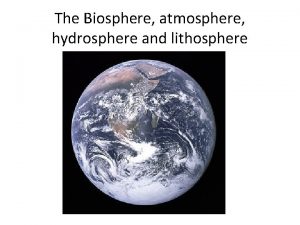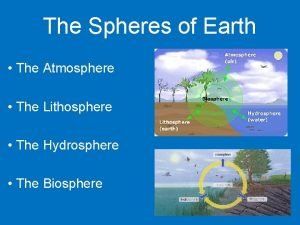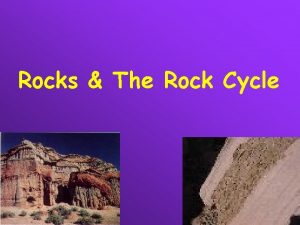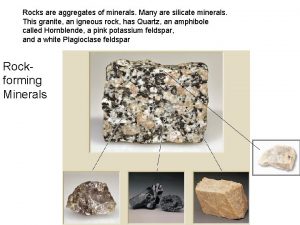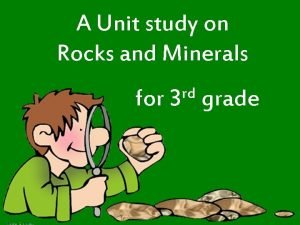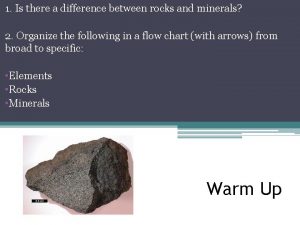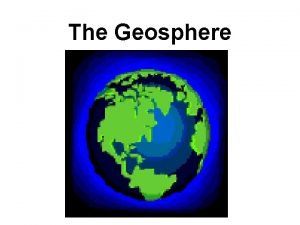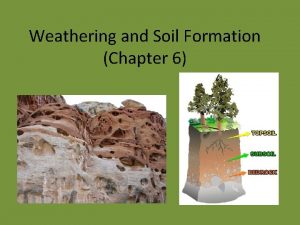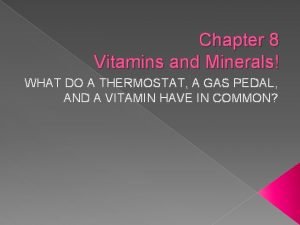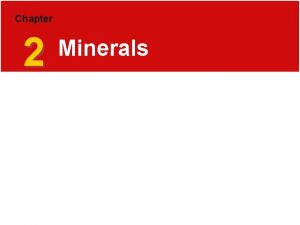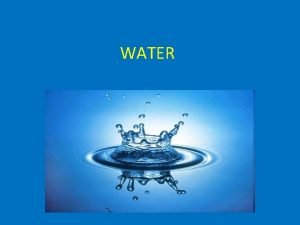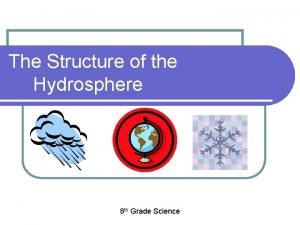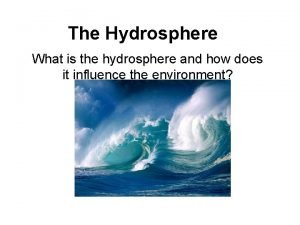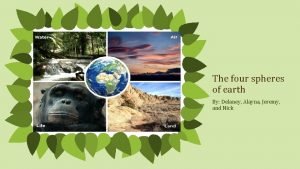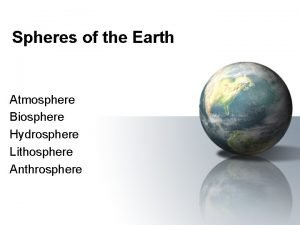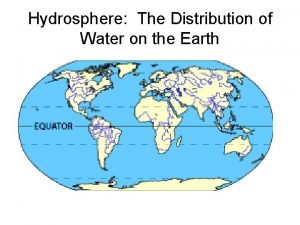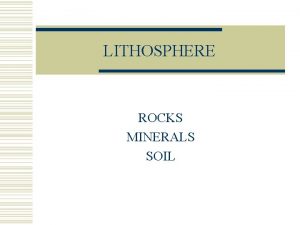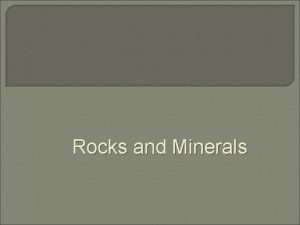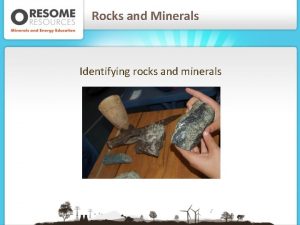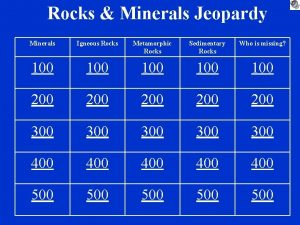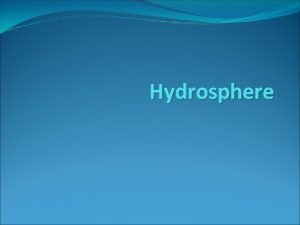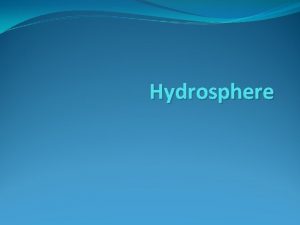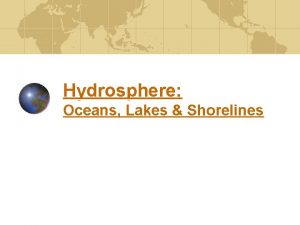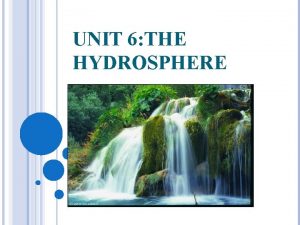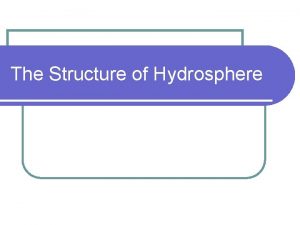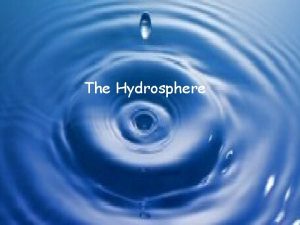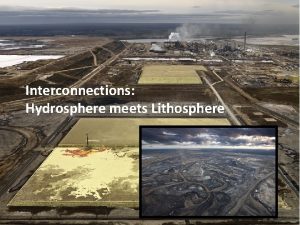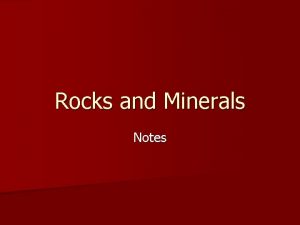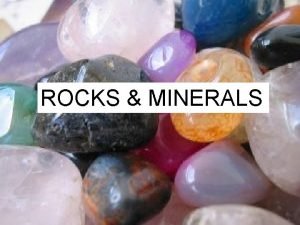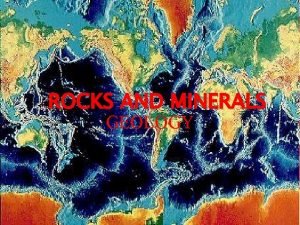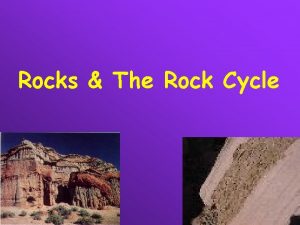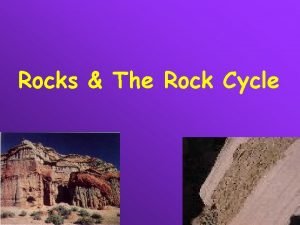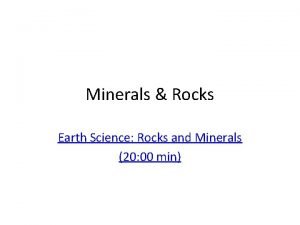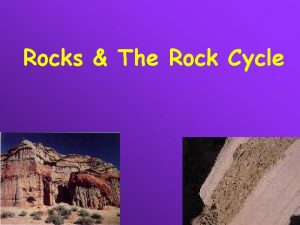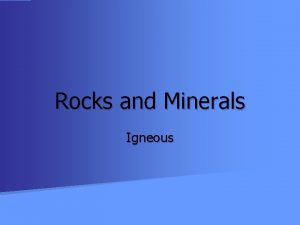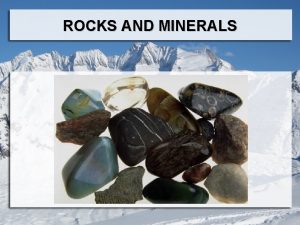CHAPTER 6 LITHOSPHERE HYDROSPHERE LITHOSPHERE MINERALS ROCKS SOIL


























- Slides: 26

CHAPTER 6: LITHOSPHERE & HYDROSPHERE LITHOSPHERE MINERALS ROCKS SOIL PERMAFROST ENERGY RESOURCES POLLUTION & DEGRADATION HYDROSPHERE INLAND WATERS OCEANS CRYSOPHERE ENERGY RESOURCES POLLUTION & DEGRADATION

THE LITHOSPHERE A hard shell of the Earth, consisting of the crust and the topmost part of the Upper Mantle. Contains minerals and rocks that are essential to the development of human civilization. It is the source of building materials, metals, and precious stones. On average, only 100 km thick (Earth’s radius = 6300 km)

THE LITHHOSPHERE - MINERALS Solid inorganic substances with clearly defined composition and properties 4000 minerals are known to exist on Earth Classification: Geologists classify minerals according to 4 distinct properties – 1) colour (idiochromatic & allochromatic) 2) transparency (transparent, translucent, & opaque) 3) hardness ( 1 to 10) 4) streak (powder it leaves behind when rubbed)

THE LITHOSPHERE - MINING Geologists who wish to mine for minerals must: 1) Locate 2) Extract (mine the ore) 3) Separate Quebec mines: Gold, Copper, Zinc, Nickel, & Iron

THE LITHOSPHERE - ROCKS Rocks are heterogeneous solids composed of many minerals. Rocks don’t have clearly defined Physical or Chemical properties. TYPES OF ROCKS: Igneous – formed when magma cools and solidifies Sedimentary – formed by the accumulation and compaction of debris Metamorphic – former igneous or sedimentary rocks that have been transformed by heat or pressure

THE LITHOSPHERE - ROCKS USES OF ROCKS: ROCK TYPE USES GRANITE INTRUSIVE IGNEOUS Ornamental stone DIORITE INTRUSIVE IGNEOUS Ornamental stone PUMICE EXTRUSIVE IGNEOUS Building materials, cosmetic industry BASALT EXTRUSIVE IGNEOUS Insulation, floor tiles, road construction SANDSTONE SEDIMENTARY Building materials LIMESTONE SEDIMENTARY Cement, building materials GNEISS METAMORPHIC Building materials MARBLE METAMORPHIC Interior design, decorative objects

THE LITHOSPHERE - SOIL Soil comes from PARENT ROCK Over time, frost, wind, and rain wear down the rock on the surface of the Lithosphere. This disintegration leads to the formation of lithosol (a soil consisting mainly of large rock fragments). This mixes with organic matter from decomposing plant and animal residue. The mixture sets off a series of complex physical and chemical reactions that eventually produces SOIL.

THE LITHOSPHERE - SOIL Soil Horizons are differentiated layers running roughly parallel to the surface of the ground SOIL HORIZONS: 1) Organic Matter 2) Topsoil 3) Subsoil 4) Fragmented Parent Rock 5) Unaltered Parent Rock (page 192)

THE LITHOSPHERE - SOIL Organic matter – layer containing mostly HUMUS (decomposing plant and animal residue) Topsoil – a mixture of HUMUS and WATERSOLUABLE MIINERALS (supports plant life) Subsoil – composed of small particles (deep roots draw nutrients) Fragmented PARENT ROCK – disintegration of the underlying parent rock Unaltered PARENT ROCK – this layer is the starting point for soil formation

THE LITHOSPHERE - SOIL Three conditions must be met for soil to be fertile enough to support plant life: 1) sufficient amount of minerals (water – soluble nutrients 2) adequate moisture 3) proper soil p. H (balanced)

THE LITHOSPHERE - PERMAFROST Permafrost is ground whose temperature has been 0°C or lower for atleast two years. Found in polar regions and high altitudes Active Layer – can thaw and grow plant life with a brief growing season (until refreezing) Makes agriculture impossible and construction difficult A rise of just a few degrees can soften the ground

THE LITHOSPHERE – ENERGY RESOURCES Energy resources: Fossil Fuels – Oil, Natural Gas, Coal - forms liquids and gases from marine organisms that died and were buried in sand silt - forms solids from terrestrial plants and trees that once grew in swamps 1 - Fossil Fuels result from the transformation of organic residue

THE LITHOSPHERE – ENERGY RESOURCES 2 - Uranium – radioactive element that occurs naturally in the Earth’s crust 3 - Nuclear Energy – the energy stored in the bonds between he particles in the nucleus of an atom. 4 - Geothermics – the energy that comes from the internal heat of the Earth

THE LITHOSPHERE – POLLUTION & DEGRADATION The energy of tomorrow? Must be RENEWABLE Must be AFFORDABLE Must be CLEAN Pollutants – Soil Depletion Contamination

THE HYDROSPHERE The Hydrosphere is the Earth’s outer layer of water, uniting water in all three states: - liquid - solid - gas 97% salt water (Oceans & Seas) 3% fresh water (21% groundwater, rivers, lakes, etc – 79% glaciers)

THE HYDROSPHERE – INLAND WATERS Inland Water – all the freshwater bodies found on the continent, uniting rivers, lakes, and groundwater. Watershed – an area of land whose lakes and rivers all empty into the same larger body of water. (Quebec has 3 – Hudson Bay, Ungava Bay, St. Lawrence River)

THE HYDROSPHERE – INLAND WATERS What effects water flow within Watersheds? 1) Topography – shape, slope, and terrain of the area 2) Geology – type, depth, and structure of the rock 3) Climate – rain or snowfall, winds, and temperature 4) Vegetation – density and diversity 5) Development – Agricultural, Industrial, or Urban

THE HYDROSPHERE - OCEANS Oceans – Atlantic, Pacific, Indian, Arctic, and Southern Ocean waters are moved by currents that carry them all over the world. Two important parameters in the study of oceans: * temperature and salinity Closer to coast line lie smaller and shallower seas Temperatures range from 4°C at the bottom of the ocean to 26°C at the surface near the equator

THE HYDROSPHERE - OCEANS FACTORS affecting temperature: Depth – influences temperature because sunlight rarely reaches 200 m in depth causing a rapid drop in temperature. The Seasons – Water loses heat more slowly than land so the change is less pronounced Latitude – Surface temperatures reach 25°C or 26°C at the equator and between 12°C and 17°C in temperate zones

THE HYDROSPHERE - OCEANS SALINITY – a measure of the amount of salt dissolved in a liquid (Oceans 3. 4% -3. 7%) Salt does not EVAPORATE and therefore become concentrated in the oceans Near the poles, melting ice ( adds Fresh Water) dilutes the salt content 3% Near heat and drought areas (Water evaporates more quickly) increase Salt percentage 4%

THE HYDROSPHERE - OCEANS CIRCULATION – the water in the ocean is in constant motion. Waves and tides on the surface and ocean currents in its depths. OCEAN CURRENT – the movement of seawater in a certain direction OCEAN CIRCULATION – the combined effect of all currents that move across the oceans

THE HYDROSPHERE - OCEANS SURFACE CURRENTS Driven by the wind mostly to a depth of 400 m SUBSURFACE CURRENTS Driven by deep currents to a depth of 800 m and density of water (colder = less buoyant = sink) THERMOHALINE CIRCULATION Surface and subsurface (Hot & Cold) form a huge “Conveyer Belt” to move water all around the world and to transfer heat and regulate all of Earth’s climate

THE HYDROSPHERE - OCEANS

THE HYDROSPHERE - CRYOSPHERE – consists of all the frozen water on Earth’s surface PACK ICE – composed of the ice floating on the oceans near the North & south pole Approx. 12 million square kilometers 2008 14 million square kilometers 2005 16 million square kilometers 1979 GLACIERS – a mass of ice on land, formed by compressed snow

THE HYDROSPHERE – ENERGY RESOURCES HYDRAULIC ENERGY – the energy that can be derived from moving water WATERFALLS AND RIVERS HYDROELECTRIC DAMS – converts a river’s hydraulic energy into electrical power WAVES AND OCEAN CURRENTS TURBINES – Buoys in the ocean that converts an ocean’s current or waves into electrical power

THE HYDROSPHERE – POLLUTION & DEGRADATION HUMAN ACTIVITIES Domestic, Industrial, Agricultural, or Navigational CHEMICALS Factory discharge, Atmospheric Contaminants LIVING ORGANISMS Fertilizers, Pesticides, Phosphorus, Mercury THREATS AT SEA Accidental spills, Dumping, Hydro. Carbons
 Lithosphere
Lithosphere Hydrosphere and cryosphere
Hydrosphere and cryosphere Igneous vs metamorphic
Igneous vs metamorphic Igneous rock to metamorphic rock
Igneous rock to metamorphic rock Rock vs mineral
Rock vs mineral Rocks are aggregates of minerals
Rocks are aggregates of minerals The rock cycle song
The rock cycle song Rock cycle
Rock cycle Difference between minerals and rocks
Difference between minerals and rocks Type of rock concept map
Type of rock concept map Suzanna socked me sunday poem
Suzanna socked me sunday poem Difference between rock and stone
Difference between rock and stone Rock type
Rock type Minerals in the soil
Minerals in the soil Intrusive vs extrusive igneous rocks
Intrusive vs extrusive igneous rocks Rhyolite vs basalt
Rhyolite vs basalt Pictures of different agents of weathering
Pictures of different agents of weathering Living soil vs dead soil
Living soil vs dead soil Convergent plate boundaries
Convergent plate boundaries Chapter 8 vitamins and minerals
Chapter 8 vitamins and minerals Chapter 2 minerals
Chapter 2 minerals Underground water
Underground water Structure of the hydrosphere
Structure of the hydrosphere What is the hydrosphere
What is the hydrosphere Geosphere defenition
Geosphere defenition How does biosphere interact with hydrosphere
How does biosphere interact with hydrosphere Distribution of hydrosphere
Distribution of hydrosphere
